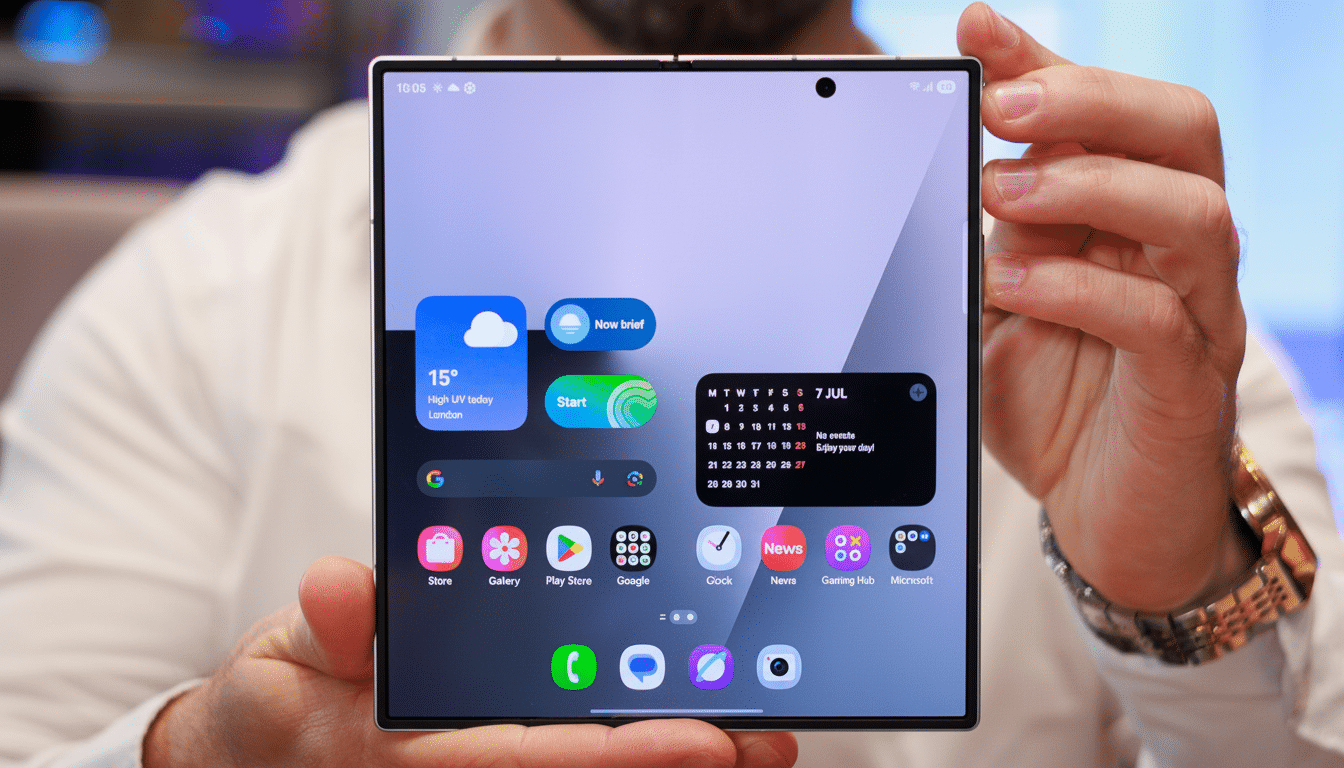Samsung has also reduced the price of the Galaxy Z Fold 7 by a whopping $600, putting the foldable flagship at $1,399.99. The offer is available directly with the company, and applies to every color option — no trade-in needed. That’s a straight price cut in a category where sale prices typically rely on the trade-in value of existing devices or commitments to a carrier — and it’s $200 below what you could purchase another rival, non-folding smartphone for right now.
The deal in brief: $600 off Z Fold 7 with no trade-in required
With a standard list price of $1,999.99 for the Z Fold 7, it sits squarely in the ultra-premium tier.

A $600 cut makes the math change, particularly for those considering plunking down cash on a foldable now versus later. The offer shows during checkout when you continue without a trade-in, and it’s for the base model in various colors. The company has not spelled out a cut-off point, but these direct-to-consumer markdowns tend to go quickly once inventory becomes scarce.
At the immediate top-line level, it’s straightforward: you are considering nearly $100 off a major competitor foldable that has been retailing for around $1,499. For those shoppers who appreciate the book-style design and Samsung’s ecosystem perks, that small but significant price gap can be a deal-breaker.
What sets the Galaxy Z Fold 7 apart from rival phones
Samsung’s seventh-gen Fold hones the basics: a crisp 8.0-inch LTPO AMOLED 2X inner touchscreen at 120Hz and 2,184 x 1,968 resolution for a tablet-grade canvas, plus a useful 6.5-inch external panel for one-handed utility.
The hinge mechanism keeps getting stronger with tighter tolerances and a decrease in crease visibility, making the device feel more like one slab when open and even pocketable when shut.
Powering the phone is the Snapdragon 8 Elite for Galaxy with 12GB of RAM, which ensures multitasking remains brisk when you’re running split-screen apps or dragging content between windows. The 200MP main camera offers high-resolution flexibility — useful for cropping or loss-minimizing zoom — but Samsung’s best still-image quality can be found in its non-folding flagships. Features from Galaxy AI, such as Circle to Search and on-device assistive editing, begin to stitch the experience together a bit more by facilitating common tasks.

Materials and longevity are also a generation apart. An aluminum frame and Gorilla Glass Victus 2 reinforce the exterior, while an IP48 rating provides some dust and water resistance — essential for a device with moving parts. Battery life is still the main trade-off here, as even with a 4,400mAh battery feeding that duo of displays, charging still only maxes out at 25W wired and 15W wireless. For most people that’s perfectly acceptable, but power users will need to ration brightness and keep a charger close on marathon days.
How it compares to rival foldables at current sale prices
The closest competition is a book-style foldable on sale already for $1,499, but this rival offers 16GB of RAM, a smaller battery at 5,015mAh capacity, wired charging at just 30W, and works with a full IP68 rating, too. That device has a strong appeal to buyers who want a cleaner software look and tighter integration with some services. Samsung’s comeback is twofold: a closer-to-mature large-screen multitasking setup (years of taskbar behavior and app continuity have been featured), and deep hooks into the ecosystem with Galaxy tablets, watches, and buds.
With this discount, Samsung is effectively changing the price narrative, at least for now: The Z Fold 7 and that rival are about $100 apart in cost. If you’re already part of the Galaxy ecosystem or really value how Samsung approaches software to behave on a large screen, this is a compelling nudge toward commitment.
Market context and why this timing for the price cut matters
Foldables are still a high-ASP segment, and pricing is the key friction point. Counterpoint Research and IDC analysts, for example, have continually pointed out that adoption can be heavily swayed by promotions and carrier incentives. Worldwide foldable shipments reached the mid-teens of millions in recent years, though growth has been volatile quarter to quarter given sensitivity to price points and availability.
Deep cuts on unlocked models are definitely less common than trade-in-heavy deals, so this $600-off deal is significant. It broadens the potential market beyond early adopters already accustomed to stacking incentives and overcoming carrier relationship obstacles. For Samsung, it’s a defensive response to increasing competition in a category where Display Supply Chain Consultants have cited very quick panel improvements and lap-friendly thinness nearing an area of mainstream acceptance.
Bottom line: $600 discount makes Z Fold 7 easier to recommend
If you’ve been admiring a book-style foldable, a price cut of $600 meaningfully re-litigates the calculus around its value. You get a refined big-screen experience, flagship performance, and helpful AI tools with the Galaxy Z Fold 7, and its trade-offs — battery capacity and charging speeds — are not deal-breakers for most people. At $1,399.99, with no trade-in hoops to jump through, this is among the most accessible on-ramp moments to date for Samsung’s flagship foldable.

